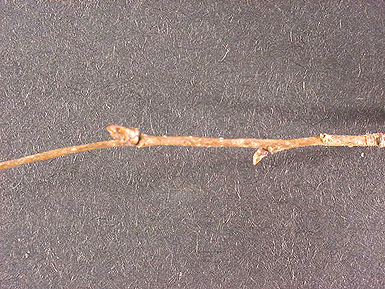Form: The tree is small ranging up to 35 ft. in height and a dbh of 1ft.
Leaves:
Arrangement: alternate
Shape: ovate-oblong
Margin: doubly serrate
Texture: glabrous above; pubescent in the axils of veins & on the petiole
Venation: parallel
Bark: The bark is thin, gray and broken into thin strips. It look similar to a "cat scratch".
Twigs and buds: The twigs are brownish-red and occasionally pubescent. The buds, in a cross section, are cylindrical with a grooved scales.

Flowers and fruit: The fruit is very distinctive, resembling hops. It is a 1/4 inch nutlet enclosed in dried, leafy, papery sac in clusters.
Distinguishing characteristics: This species has leaves with doubly serrated margins, shredding bark, a nutlet for a fruit, and twigs that are slender and brownish-red.
Range: Occurs from Maine south to North Dakota and south to northern Florida.
Silvics: This species is very tolerant and occurs on moist to mesic upland. It is also noted as being an understory species.
Ecological and cultural importance: The wood is used in posts and golf club handles. The twigs are browsed by white-tailed deer. The fruits are browsed by various species of game birds.